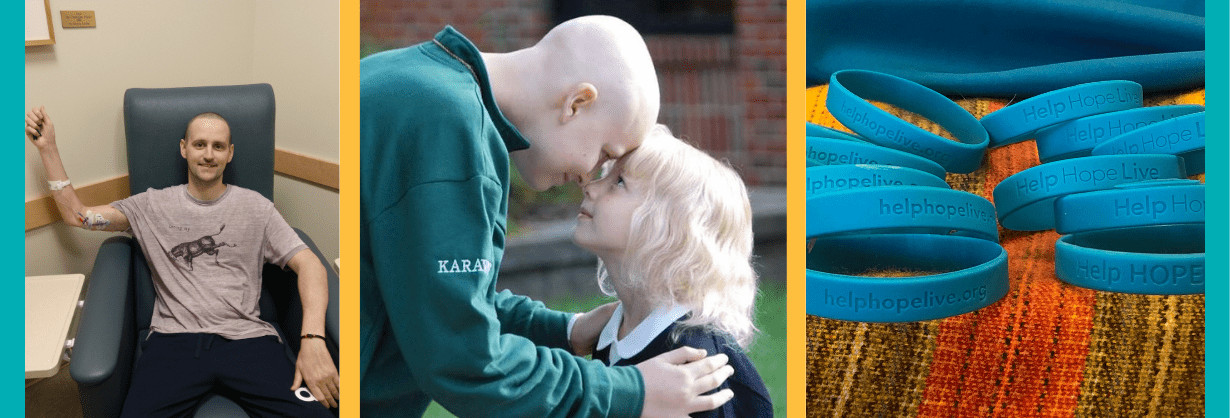
MobilityWorks
Accessibility for all: Helping people connect with who and what matters most
Searching...
No results found. Please try modifying your search.
What does a bone marrow transplant cost? Learn what to expect and how our nonprofit can help.
The profound sense hope following a bone marrow transplant should never be overshadowed by financial concerns. Facing the expenses associated with bone marrow transplantation and ongoing medical care can feel overwhelming, but with the right support, it’s manageable.
Whether you’re a patient, caregiver, or healthcare provider, understanding bone marrow transplant financial assistance and the costs involved are crucial initial steps.
Thankfully, bone marrow transplant patients facing the financial challenges of procedures and recovery can find financial assistance. Help Hope Live offers community-based fundraising solutions to assist with the costs associated with bone marrow transplants.
Bone marrow transplantation is one of the most expensive cancer treatments. According to a 2025 report by Millman, the average of $1,261,800 per patient for allogeneic bone marrow transplants and $577,000 per patient for autologous bone marrow transplants. However, due to the variety across the types of bone marrow transplants, it’s difficult to predict exactly what a transplant will cost including out-of-pocket expenses, medication, and aftercare.
Additionally, bone marrow transplant insurance coverage varies. Depending on the needs of the patient, the average cost of a bone marrow transplant can range from $80,000 to up to $400,000 before health insurance.

A bone marrow transplant is a unique therapy to treat patients with various types of cancer or even other diseases. According to Hopkins Medicine, the transplant itself involves “taking cells that are normally found in the bone marrow (stem cells), filtering those cells, and giving them back either to the donor (patient) or to another person.”
A successful bone marrow transplant is the process of transfusing healthy bone marrow cells into a person after their own compromised bone marrow has been treated to kill the abnormal cells.
Do bone marrow transplants have a record of success? Yes: Hopkins Medicine states that the procedure has been used since 1968 to treat diseases such as leukemias, lymphomas, aplastic anemia, immune deficiency disorders, and some solid tumor cancer.
Many bone marrow transplant candidates and recipients turn to medical fundraising to help cover out-of-pocket expenses associated with a transplant, including:
Each health insurance policy varies significantly. While some plans may offer coverage for transplants, others may not cover the cost of bone marrow transplant procedure finding a donor or cord blood unit. Even with insurance coverage, patients may still face co-pays for medications and clinic visits, and other out-of-pocket expenses for bone marrow transplant patients.
If you need bone marrow transplant financial assistance, Help Hope Live is here to offer support every step of the way. As a nonprofit organization, we understand the financial strain that can come with this life saving procedure. That’s why we harness the power of community-based fundraising to alleviate the financial burden associated with bone marrow transplants.
The community-based fundraising process with our nonprofit starts with a few simple steps:
Help Hope Live differs from GoFundMe by:
We are a nonprofit with more than four decades of fundraising experience and a 4-star Charity Navigator rating.
Here are a few Help Hope Live bone marrow transplant fundraiser success stories:

Mother of three Kate Jauch has been fundraising with Help Hope Live since 2010 for the immense out-of-pocket expenses connected with acute lymphocytic leukemia, including chemotherapy and multiple bone marrow transplants. Kate’s campaign has surpassed $30,000 raised, exceeding the Jauch family’s initial $25,000 goal. Funds raised help cover costs ranging from temporary housing and medical transportation to medications and home health services.
Erin Meredith Cahill-Wetzel is in the midst of rigorous treatments for triple negative breast cancer. Erin and her husband welcomed their fifth child into the world in February 2022 as they recognized the midpoint in Erin’s course of chemotherapy. Erin and her family have surpassed $21,000 raised with Help Hope Live.
If you choose to fundraise with our nonprofit, here’s how the process will look:
1. APPLY for assistance
2. YOU’LL BE PAIRED with a Client Services Coordinator
3. YOUR COORDINATOR will provide you with one-on-one fundraising help, including personalized fundraising materials and guidance on how to rally your community, share your story on social media, reach out to the press, plan in-person or virtual fundraising events, and more.
Need Other Financial Help Options?
For alternatives to fundraising, you can find information on a variety of organ transplant financial assistance options. Please view our Transplant Resource Directory for insight into sources of direct financial aid, support groups, and other resources for transplant patients and their families.